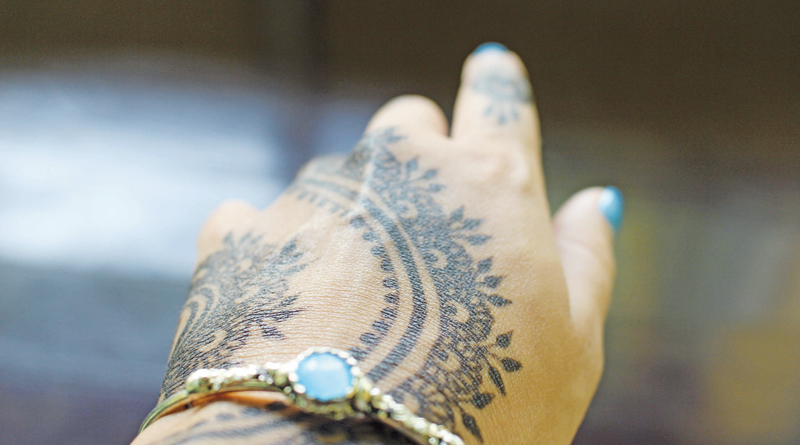

SWATI BASU DAS -
axisswati@gmail.com -
As the festive days of Eid approaches, women of the Sultanate are seen getting busy enhancing their style. They can also be notice keeping up with the latest and trendiest fashion in town. From hair, henna, dress to jewellery, women are seen awake till dawn to grab the best items to embellish themselves to celebrate the spirit of the festivities.
As most parlours are seen working twenty-four hours, the customers have array of requests pouring in to their stylist. There are many in the region who love to gather overnight with friends and families where they find at least two to three artist ready to gild hands and feet with elaborate and neat floral and geometrical patterns. It ranges from traditional look to flaunting the most a la mode vogue.
A traditional touch of brown henna is seen well complimented with the beautifully sequinned Galebiyas and head gears. For many of the young women, it comes natural to go for the most in demand and the latest trend, and this time around, it’s using different hues of henna.
A temporary decorative traditional art of painting hands and feet, many of the local women likes to go with elaborate floral designs but holding prominent position in the most-sought after rank are contemporary tattoo designs apt for the festive days.
Banned in Oman, black henna has always touched the heart of the local women and has made its impressive entry into the adorned body art list with a much safer and organic version offered by Majlis Al Henna, the most renowned henna parlour in Muscat.
“Black henna is loved by our ladies, but due to its quality which contains high level of PPD which is harmful to the skin causing chemical burns and allergic reactions, it has been banned. But here, we offer the safe natural black henna, which is a mixture of organic ingredients imported from US. We also have the traditional brown henna. These are safe to use as body art and has been catching up this Eid, ”shared Karima al Barwani and her partner HH Sayyida Borda al Said of Majlis Al Henna, in Al Khuwair.
As black henna is all set to impress women this year during Eid, there are henna art which, with their different colour tones, innovative details and intricate work enhances real beauty.
The blue henna or the jagua henna is one such in the list that has amazed several women.
This carefully-kept Amazon secret has found its way into the hearts of Omani women who love to decorate their hands and feet with this magical temporary tattoo.
The colour of blue henna deepens from one to two days. It is best done three days prior to Eid to get the best navy blue effect which makes it look much like a permanent tattoo.
“The blue henna is a gel squeezed out of Jagua fruits. It is the juice of this fruit which is used by the Red Indians to paint their body. Women finds it very unique as this stays on the skin for more than two weeks or till the outer skin regenerates. It is very much in vogue,” Karima al Barwani said.
Done in many forms and designs varying from blooming floral, intricate designs to contemplating a permanent tattoo, the art of henna has evolved through the passage of time, offering women an elegant and feminine touch and delving oneself into this alluring and divine art rich in culture.
The art of henna body application among women has evolved since its ancient origin in Middle East, Indian subcontinent and Africa. The application itself is an art that requires precision and patience. Creating temporary patterns on the skin in a very ornate, celebratory way to stay in spirit of the celebration of occasions and festivals is a tradition that dates back to as far as 5000 years branching out from
people from different region and countries.
Oman Observer is now on the WhatsApp channel. Click here



